June 16, 2017
The Gulf of Maine Expedition: Updates from the Deep Sea
Estimated reading time: 0 minutes
Day One and Two
The Gulf of Maine expedition departed from Newport, Rode Island, on Friday, June 9, a bit later than planned because of bad weather. The first livestream aired on Sunday, June 11, made possible thanks to the ROPOS, a Remotely Operated Vehicle with high-definition cameras that can capture and stream video straight from the sea floor as deep as a kilometer.
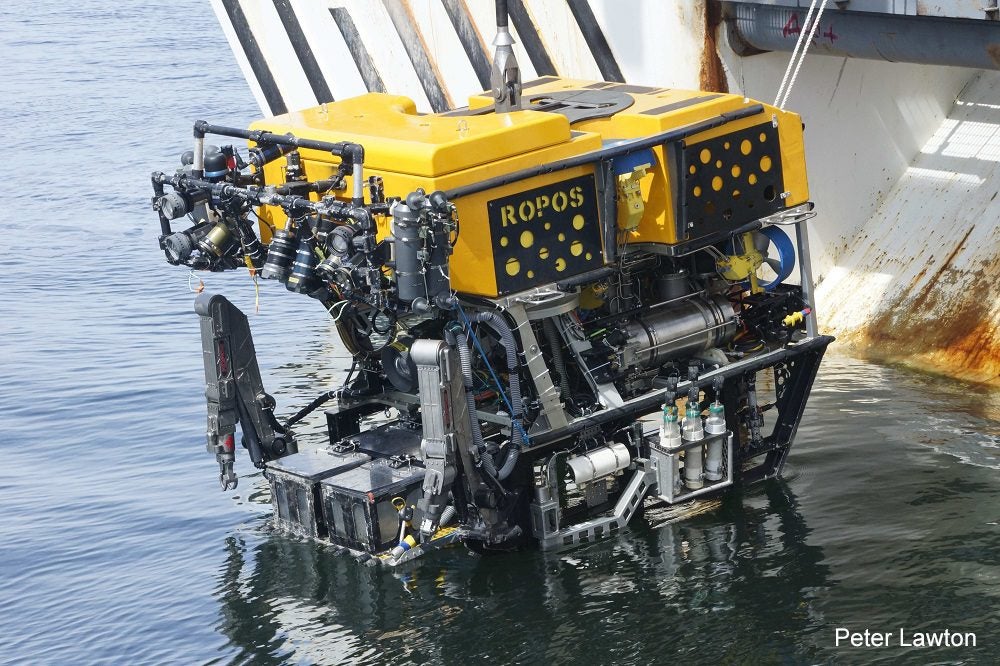
On board the Bigelow, a National Oceanic and Atmospheric Administration (NOAA) vessel, is a team of scientists including: Dr. Anna Metaxas, Dalhousie University; Dr. Paul Snelgrove, Memorial University; Dr. Peter Lawton, NSERC project collaborator, Fisheries and Oceans Canada; and Dr. Martha Nizinski, NOAA. Each of them are taking turns in the ‘hot seat,’ in front of the ROPOS monitors, narrating the livestream and answering questions for all of us to learn about ocean exploration and research.
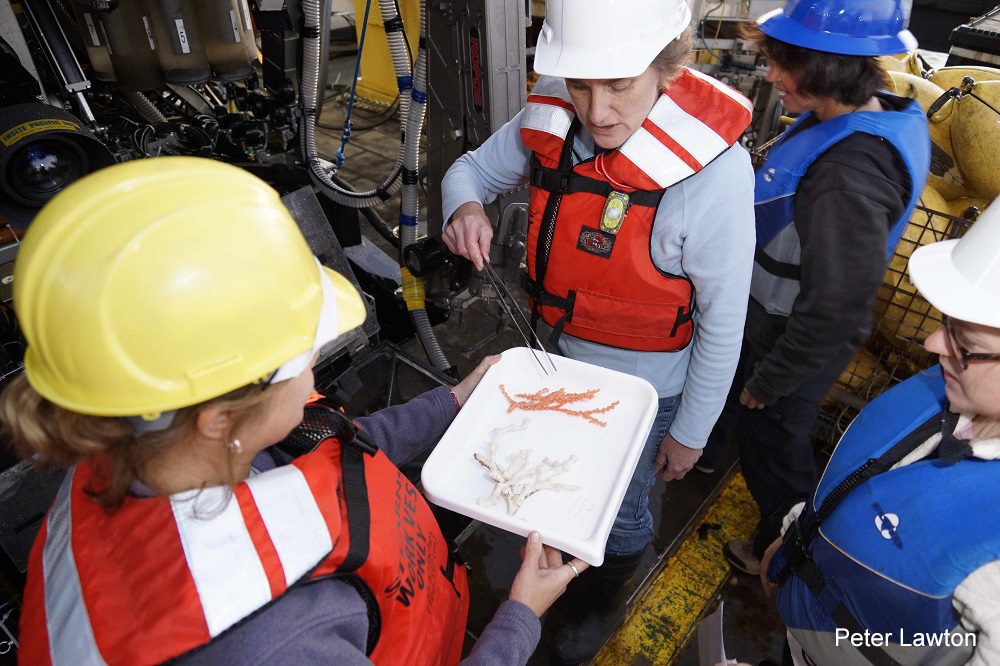
Day Three and Four
Sunday and Monday’s dive were narrated by Dr. Martha Nizinski whose enthusiasm for discovery could be heard in the gasps and excitement as the ROPOS traversed down unnamed canyons, up embankments and along overhangs clustered with cold-water corals. We watched as the ROPOS arm collected coral samples, said ‘hi’ to an eelpout and investigated shrimp and sponges.
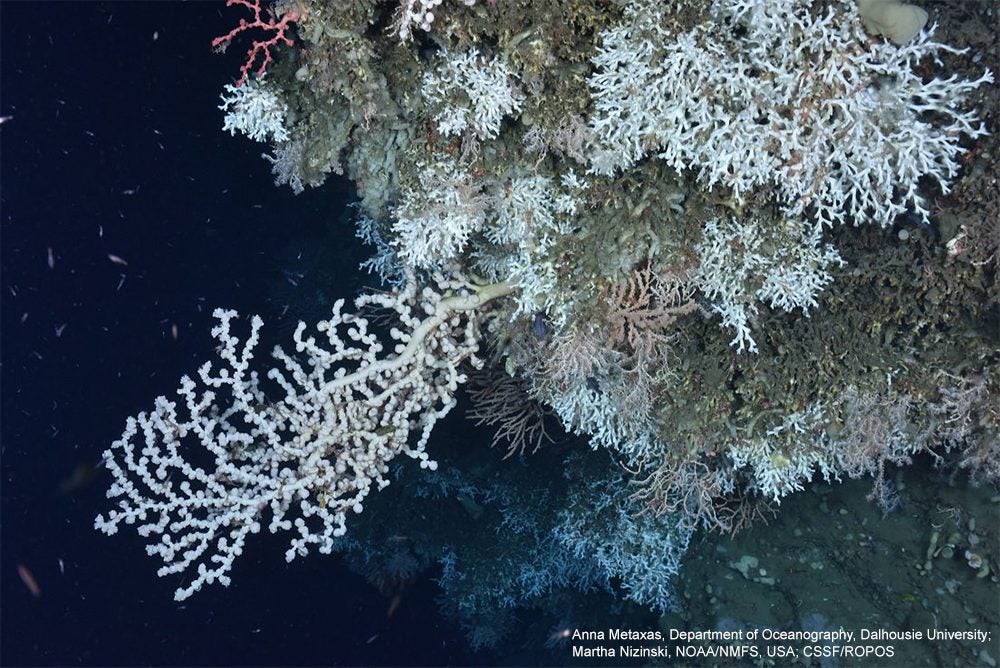
Day Five
On Tuesday, the boat crossed into Canadian water to explore Corsair Canyon. Dr. Paul Snelgrove, the expedition’s mud expert in soft sediment communities, explained how he studies the sea floor using core samples. Sediment is the most widespread type of habitat on Earth and it is teeming with life. During this dive, the ROPOS collected core samples of the sediment using a device called a push core. These samples will be used to better understand the diverse animals and microbes that live in the sea floor.
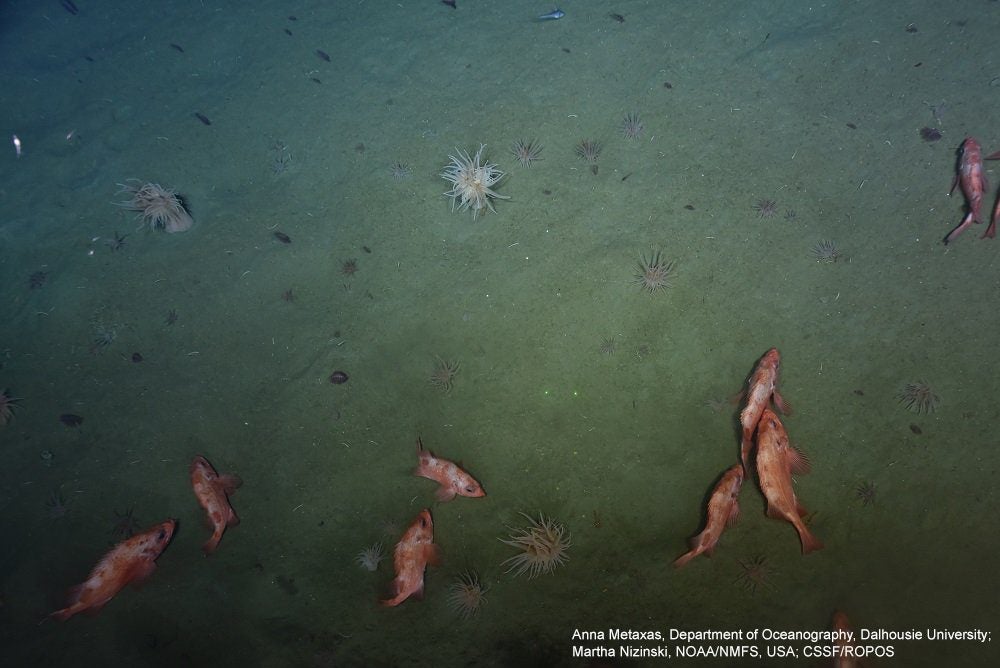
Day Six and Seven
For Wednesday and Thursday, the expedition team dove into Georges Canyon, which forms part of the Sensitive Benthic Area closed in 2016 by Fisheries and Oceans Canada to all commercial bottom-contact fishing. The ROPOS dove to depths between 400 and 959 meters, collecting more sediment samples as well as mapping the sea floor.
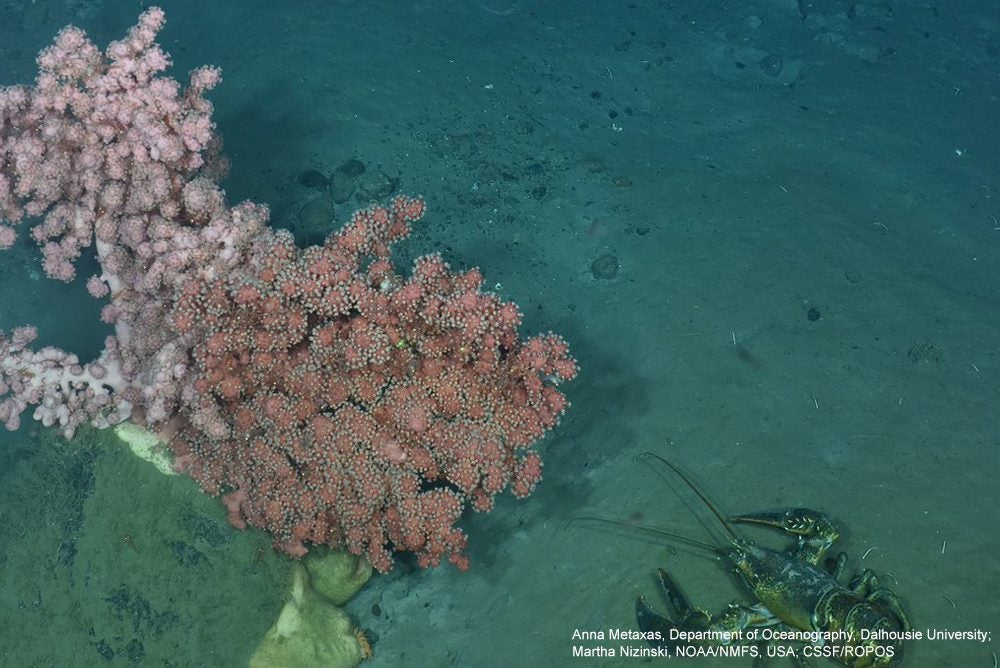
Today, Friday June 16, is the final livestream from the Gulf of Maine. Be sure to tune in to hear the broadcast from the sea floor and have one last chance to ask the scientists on board all your questions about ocean exploration.

